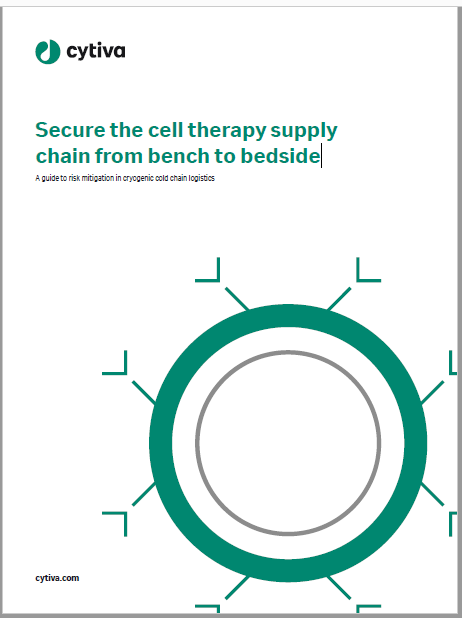

Approved in May 2019 for children under two with spinal muscular atrophy (SMA), Novartis’s Zolgensma (onasemnogene abeparvovec) is a transformative, one-time gene therapy that targets the genetic cause of SMA. Zolgensma is well known for being the most expensive drug in the world, costing around $2.1m per patient.
Developed by a Novartis subsidiary, Zolgensma relies on Maryland biotech RegenxBio’s proprietary NAV technology and its adeno-associated virus (AAV) AAV9 vector. “The NAV AAV9 vector is used to deliver the SMN gene to motor neuron cells,” explains REGENXBIO president and CEO Kenneth Mills. SMA is caused by a mutation in the SMN gene, which is responsible for developing the SMN protein that maintains the normal function of motor neurons. Without the right amount of SMN protein, the brain is unable to communicate properly with muscles in the rest of the body, causing atrophy.
Zolgensma is the first gene therapy to be based on the company’s NAV platform. Mills adds: “We are grateful to have contributed to a therapy that has impacted the lives of over 700 children with SMA and their families around the world.”
At the end of October, Zolgensma achieved $1bn in cumulative net sales. This means that REGENXBIO has received an $80m milestone payment, bringing the company’s revenue from Zolgensma to more than $140m in royalties and commercial milestones since its approval.
REGENXBIO and Zolgensma
Building on the work of Dr James Wilson at the University of Pennsylvania, REGENXBIO’s NAV technology helps create “gene therapy product candidates [that] deliver genes to cells using AAV vectors, which are nonreplicating viral delivery vehicles that are not known to cause disease”, explains Mills.
Mills believes REGENXBIO’s platform creates significantly improved AAV vectors, allowing for better delivery of genes into cells and leading to “higher expression and increased durability, broad and novel tissue selectivity, and improved manufacturability”.
“These unique benefits have been demonstrated in our own clinical studies and animal models using our NAV vectors, as well as third-party clinical trials and animal models,” adds Mills.
REGENXBIO’s journey with AveXis – a Novartis subsidiary that has since been renamed as Novartis Gene Therapies – began in 2014 when the pair entered into an exclusive license agreement. “Under the license, REGENXBIO granted AveXis an exclusive, worldwide commercial license, with rights to sublicense, to the NAV AAV9 vector for the treatment of SMA in humans by in vivo gene therapy,” says Mills.
This agreement was extended in 2018 to give AveXis rights to REGENXBIO’s entire NAV technology platform for the treatment of SMA. Novartis and REGENXBIO are collaborating on other gene therapy programmes in Rett Syndrome and amyotrophic lateral sclerosis.
Partnerships are generally an important part of REGENXBIO’s business model. “As of September 30, 2020, REGENXBIO’s NAV Technology Platform was being applied in one marketed product, and multiple clinical-stage programs, with over 20 partnered programs in total,” notes Mills.
Exploring the rest of REGENXBIO’s pipeline
Mills explains that REGENXBIO intends to use this latest $80m milestone payment from Novartis to “fund its operations, including the completion of its internal manufacturing capabilities and clinical advancement of its product candidates”.
REGENXBIO has five programmes in its pipeline, which address genetic diseases in two ways: through antibody delivery and monogenic gene replacement.
One lead programme is RGX-314 for wet age-related macular degeneration, diabetic retinopathy and other chronic retinal conditions. It leverages the NAV AAV8 vector, which contains a gene encoding for a monoclonal fragment that is designed to neutralise vascular endothelial growth factor (VEGF) activity.
Mills hopes to start a pivotal programme for the subretinal delivery of RGX-314 for wet AMD in the first quarter of 2021. The company is also dosing patients for suprachoroidal delivery of the product for a Phase II study; initial safety data is expected in early 2021, according to Mills.
Another promising candidate is RGX-121 for Mucopolysaccharidosis Type II (MPS II), a genetic lysosomal storage disease caused by a deficiency of iduronate-2-sulfatase (IDS). Mills notes further updates from REGENXBIO’s Phase I/II trial are expected by the end of 2020.
Cell & Gene Therapy Coverage on Pharmaceutical Technology supported by Cytiva.
Editorial content is independently produced and follows the highest standards of journalistic integrity. Topic sponsors are not involved in the creation of editorial content.



